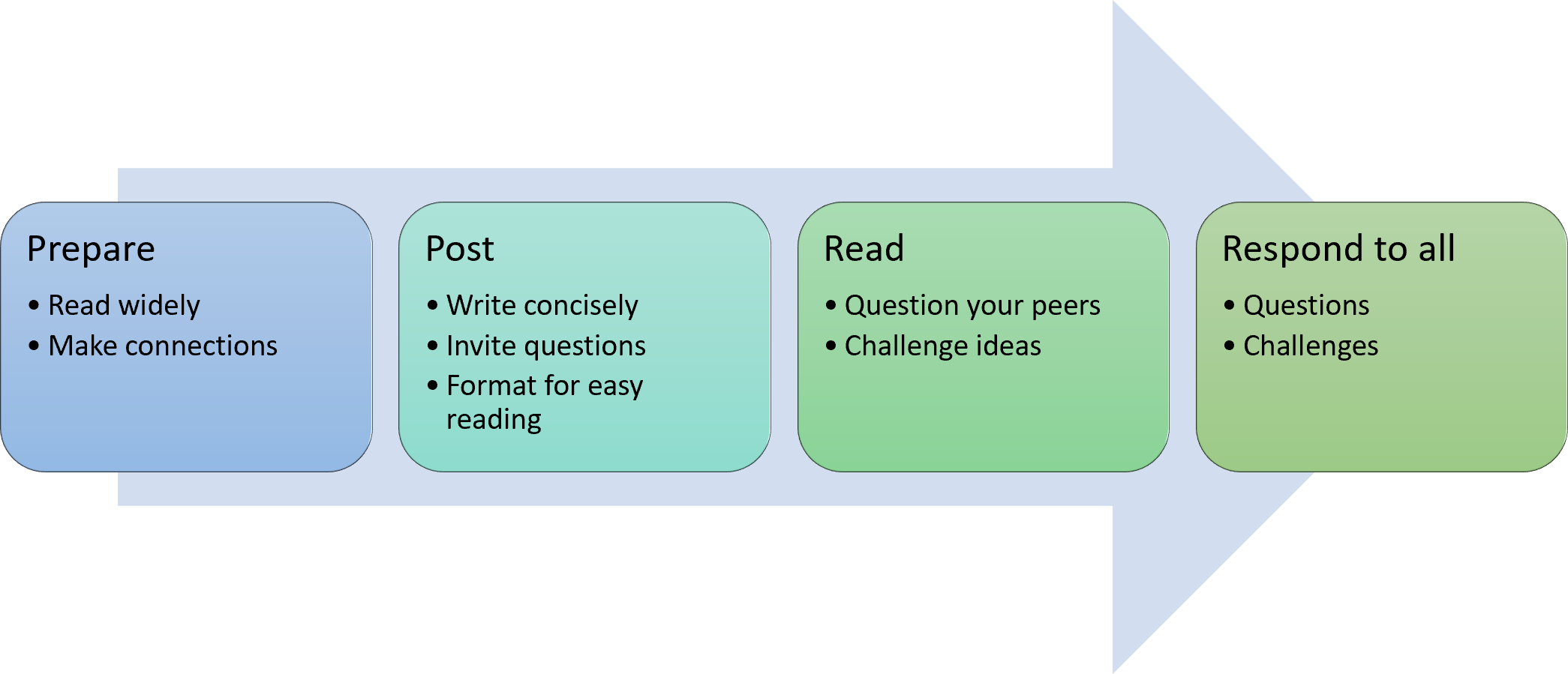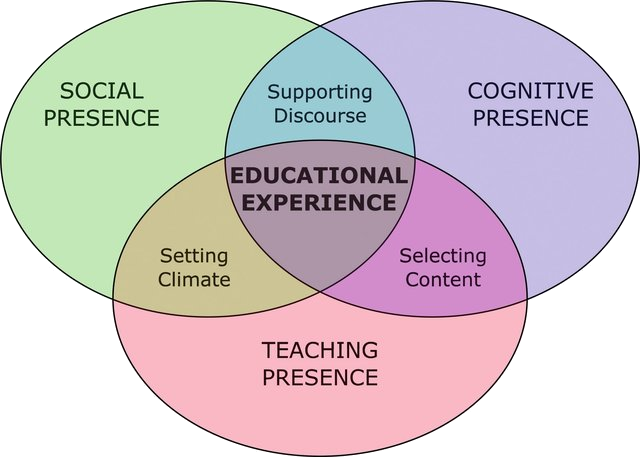Discussion Forums
These activities use discussion forums as a place and space in which to reflect on your actions in the company of your peers. You are asked to contribute to your classmates' and your own understanding of the topics at hand by actively engaging in the discussion forums.
How do you do this?
First, you are strongly encouraged to split your time into smaller chunks so that you can ponder and reflect, before visiting the discussion boards repeatedly to have online conversations with your community. A discussion is a 'back and forth' exchange ... and back and forth and back and forth.
- Prepare: Relate the topic to your own experience and give concrete examples from your practice to support any arguments or opinions you put forth.
- Post: Engage your classmates by writing concisely and thoughtfully. Take time to think about your post. Invite people to comment - give them permission to challenge you. Use short, focused paragraphs. Stay within the word limit. You have something to say, so make sure people can hear you!
- Read: Support and encourage your classmates by asking appreciative, yet challenging questions. If you disagree with a comment, challenge your classmate to prove it. If you agree, challenge your classmate to improve it.
- Respond to all: Accept all challenges to your ideas by responding to the challenge with the spirit in which the challenge was offered - the quest for knowledge

